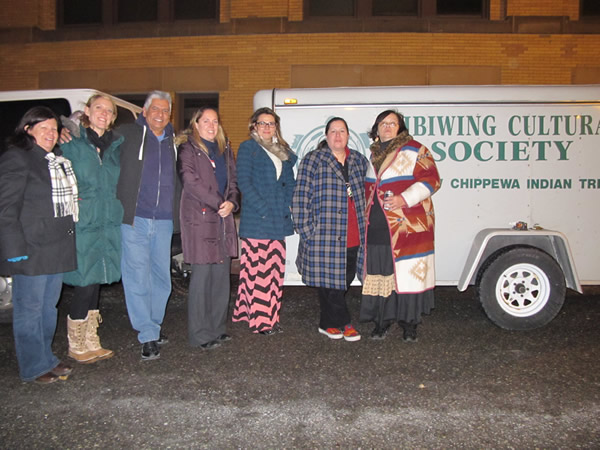WSU begins return of Native American human remains to Michigan's federally-recognized tribes
The Department of Anthropology at Wayne State University repatriated more than 30 sets of ancestral human remains and associated funerary objects on Dec. 9, 2013, to the Saginaw Chippewa Indian Tribe (SCIT) of Michigan. The delegation, representing the SCIT, the Ziibiwing Center of Anishinabe Culture & Lifeways in Mt. Pleasant and 11 other federally recognized Native American tribes from across the state of Michigan, met with faculty and staff at the Gordon L. Grosscup Museum to prepare the skeletal remains for transfer to the tribes.

The return was carried out under the Native American Graves Protection and Repatriation Act (NAGPRA) passed into law by President George Bush in 1990. The law requires that museums and other organizations provide US tribes with information about Native American remains and objects in their collections, consult with tribes about cultural affiliation of those items and transfer requested ancestral remains and objects subject to the law. Repatriation is a process that now impacts the way that Native Americans, museums, archaeologists and others conduct educational programs, research activities and everyday business operations some 20 years after the passage of the law.
The ancestors returned by Wayne State may date as far back as Michigan's Archaic period (more than 2000 years ago) up through the Late Prehistoric period (the 11th through 14th centuries AD). The majority of them come from the Tyra site, a Late Prehistoric settlement and cemetery location of Native Americans who practiced a hunting and gardening way of life and buried or cremated their dead at sites along the Tittabawassee River in central Michigan. While the descendants of these earlier individuals cannot be precisely known, NAGPRA stipulates that the remains be returned to federally recognized tribes who historically, and in some cases to this day, lived within territories from which the ancestral remains were removed.
The Wayne State museum repatriation team was made up of Drs. Thomas W. Killion (anthropology chair), Krysta Ryzewski (acting museum director), Teddi Setzer (bioarchaeologist) and Ms. Brenna Moloney (museum research coordinator). Killion noted, "repatriation is basically about respect and is based on the notions of consultation and consent. In the past Indian people were not consulted about how their deceased ancestors were to be used by others.
Rarely if ever would community members or their leaders have willingly consented to the disturbance of the dead for purposes outside of their normal ceremonial treatment. I think most of us can understand that perspective, especially when we apply them to our own relatives and neighbors who have passed on and whose remains now reside undisturbed in nearby cemeteries. I hope that this repatriation takes an important step toward developing stronger relations of education, research and outreach between Wayne State University and the many Native American communities of Michigan in the future."
Mr. William Johnson, NAGPRA designee for the Saginaw Chippewa delegation and Curator of the Ziibiwing Center (ZC) of Anishinabe Culture & Lifeways commented "we acknowledge the efforts of the Wayne State University repatriation team in making this disposition of ancestral human remains a reality. We would like to recognize Dr. Tamara Bray for her contributions leading to today's transfer of control and possession. This is truly a momentous day for the University and for our tribal community. " Mr. Johnson was accompanied by Charla Cummins (ZC funding and development specialist), Shannon Martin (ZC director and SCIT NAGPRA designee), Ruby MeShawboose (ZC Board of Directors) and Charmaine Shawana (tribal council emeritus). The remains were buried in a ceremony at a cemetery for repatriated remains on Saginaw Chippewa tribal lands in Mt. Pleasant, Michigan on Friday, Dec. 13, 2013 (see the SCIT website for more details).
![Wayne State Anthropology Delegation at Saginaw Chippewa Burial site in Mt. Pleasant, Michigan on December 13 (left to right: Chris Papalas, Brenna Moloney, Tom Killion, Dan Harrison and William Johnson [curator, Zebiiwing Center for of Anishinabe Culture and Lifeways in Mt. Pleasant])](https://news.wayne.edu/storage/files/wsuanthomuseumdelegationatmtpleasant-small-650c6ca941417.jpg)
Additional NAGPRA-mandated returns will be completed by Wayne State University in collaboration with other federally-recognized Native American tribes in Michigan in early 2014.
For more information contact Dr. Thomas W. Killion (thomas.killion@wayne.edu).